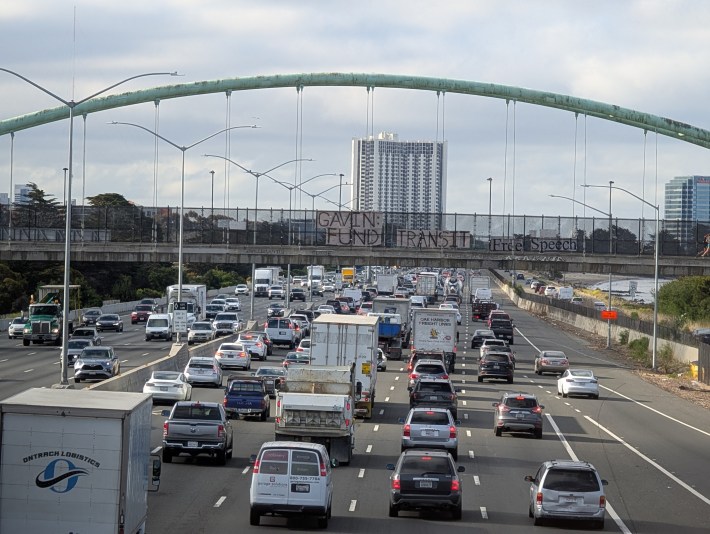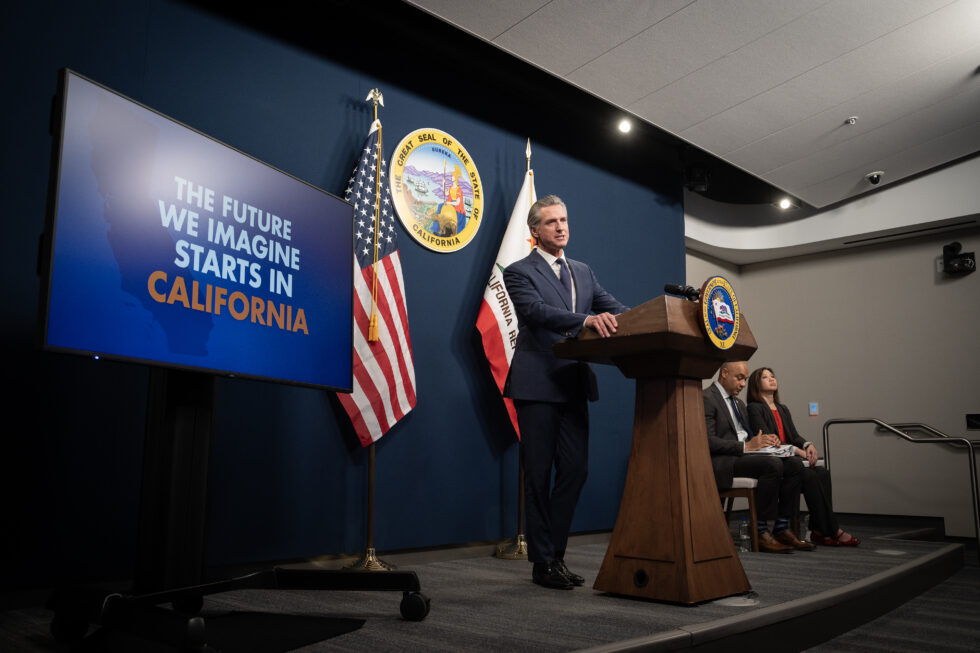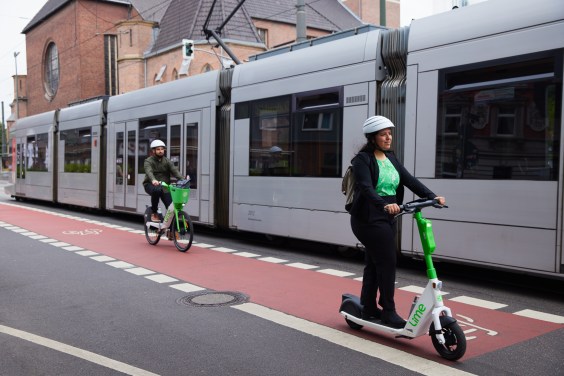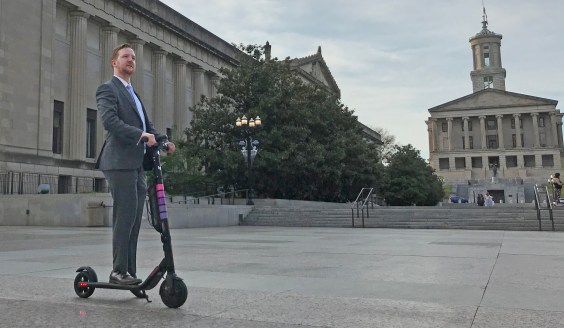You’ve seen the headlines by now.
Governor Newsom released a revised budget for the next fiscal year. The budget spends $322 billion and has a nearly $12 billion deficit that will be paid down by the state’s reserves.
Newsom is proposing cuts to just about everything (except California High Speed Rail, more on that below, and water reclamation projects) and a freeze on salaries for state workers. Now that the dust has settled, let’s look at what the Governor is proposing for the budget that begins on July 1.
But first, a reminder that the Governor proposing a budget doesn’t mean it will be passed by the legislature the way it’s written. Even in a state dominated by one political party, the legislature negotiates with the Governor before passing a final budget for the Governor to sign. For example, just last year, the legislature rejected proposed cuts to inter-city rail and the popular and over-subscribed Active Transportation Program and was able to restore some, but not all, of the funding.
Active Transportation
CalBike didn’t mince any words about the revised budget proposal. “California’s Transportation Spending Has the Wrong Priorities” read the headline of the press release/blog post the group put out yesterday.
The revised budget matches the $200 million set aside for the state’s Active Transportation program, which funds bicycle and pedestrian projects throughout the state. The program received $2.5 billion in requests last year. Projects that scored 95 out of 100 in the state’s scoring metric weren’t funded because of the lack of funds.
Advocates had hoped, given the federal government’s attack on bicycle and pedestrian projects as “woke” and shifting the national transportation goals towards increasing oil dependence, Global Warming, and Climate Change, that the state would prioritize active transportation. They were disappointed.
“Active transportation projects give us the biggest bang for our buck,” said CalBike Policy Director Jared Sanchez. “Yet the governor consistently cuts sustainable transportation while leaving funding for our unsustainable legacy transportation systems untouched.”

Transit Operations
Advocates, researchers, and even Democratic political leaders were warning that transit agencies across the state are heading towards a “fiscal cliff” as ridership is returning, but not fast enough to balance the books for agencies that depend on fares.
Obviously, hope is not coming from Washington, D.C. And unless there are changes to this budget, help is not coming from Sacramento either. The budget proposes $0 in emergency funding for transit operators.
Earlier this week, transit supporters took the unusual task of pleading with the governor with highway banners asking the governor to fund transit. Bay Area State Sens. Scott Wiener (D-San Francisco) and Jesse Arreguín (D-Berkeley), asked the governor to allocate $2 billion in the revised budget for a one-time infusion of operating dollars, with $800 million of that going towards Bay Area agencies. This would give the agencies time to put a measure on the 2026 ballot to balance their books.
Arreguín has not given up. He tells KQED that he plans to keep fighting for transit funding.
“It’s critical that we include in the adopted budget funding to keep transit agencies in operation in California,” he said. “We’re at the edge of a fiscal cliff, and the impact this will have on our state and particularly the Bay Area, will be significant.”
Cap-and-Trade
The budget proposed reauthorizing the cap-and-trade program, set to expire in 2030 all the way to 2045. With the program bringing in $4 billion per year, it creates a steady source of funding for climate, transportation, and other state measures.
The budget was praised by the Environmental Defense Fund (EDF) for the reauthorization and the long-term planning for the cap-and-trade funds.
“Governor Newsom’s budget revision shows his continued prioritization of California’s climate leadership, despite state budget challenges and our nation’s leaders taking us backwards. We’re pleased to see state leaders honoring the will of the voters by directing Proposition 4 investments toward proven climate solutions,” said EDF in a release.

High Speed Rail
The governor’s proposal stipulates that a minimum of $1 billion in cap-and-trade funds be allocated for high-speed rail each year. Currently, all of the major declared Democratic candidates for Governor have committed to funding high-speed rail. Presumably, that means the project will receive at least another $6 billion from cap-and-trade in the coming years, almost enough money to complete the “Central Valley spine” of the project between Merced and Bakersfield.
The announcement comes a week after Trump declared that the federal government wouldn’t spend any more on the project.
The promise of state funding allows the agency to plan for extending the line south to Palmdale and north to Gilroy, according to statements made by CAHSR CEO Ian Choudry. Choudry is seeking public-private partnerships for expansion beyond the first phase of the project, and knowledge that funding is secured should help him move forward with those negotiations.
For more on the High Speed Rail budget line, click here for an article in the Fresno Bee.
Other Transit Funding (and Affordable Housing)
The budget also proposes shifting $1.5 billion of the cap-and-trade program to the general fund to “backfill” the state’s firefighting agency after the disastrous fires in Southern California in January.
That means there are cuts to three programs funded by cap-and-trade to the Affordable Housing and Sustainable Communities Program (AHSC), the Transit & Intercity RailCapital Program (TIRCP), and the Low Carbon Transit Operations Program (LCTOP).
AHSC has helped fund over 20,000 affordable housing units near transit, plus related transportation improvements. The state estimates that by reducing car dependency, it has mitigated over 5.7 million tons of greenhouse gases.
“AHSC is the only significant ongoing source of funding for affordable housing in the state. With no new money for affordable housing production proposed in the Governor’s revised May budget, protecting the AHSC program is more important than ever so affordable housing production does not grind to a halt,” said Chione Flegal, Executive Director of Housing California.
As for the two transit programs, Transform explains it best:
TIRCP has funded over 250 transformative transit capital projects to modernize rail, bus, and ferry projects. LCTOP has funded over 1,100 operating and capital assistance projects to more than 200 public transit agencies across California, primarily benefiting disadvantaged communities.
“We urge lawmakers to preserve the continuous appropriations for affordable housing and public transit in final budget negotiations. These investments are vital to fighting climate change and the affordability crisis for low-income Californians,” said Zack Deutsch-Gross, Policy Director at Transform.
Transform and Housing California issued a joint statement condemning the changes to the cap-and-trade program with Move California, Public Advocates, the California Housing Partnership, and Enterprise (the housing non-profit, not the car rental company.)
Housing and CEQA
While state affordable housing funding is being gutted, the budget proposes changes to the state’s environmental review law, CEQA, that he claims will make it easier for developers to build all types of housing throughout the state.
The legislature is considering and debating a package of CEQA reforms, but Newsom is proposing to change the state’s permitting process as part of the budget. According to a press release, the Governor is proposing the following changes:
- Streamlining Coastal Commission permits — Creating fairer, faster housing approvals where homes are urgently needed by aligning Coastal Commission permitting timelines with those of other permitting agencies. The proposal will increase accountability and regulatory certainty for urgently needed housing in coastal communities.
- Doubling down on smart housing policies — Promoting infill and transit-oriented development that reduces emissions and vehicle miles traveled.
- Unlocking economic opportunity — Advancing policies that create jobs, attract private investment, and accelerate housing and economic development.






